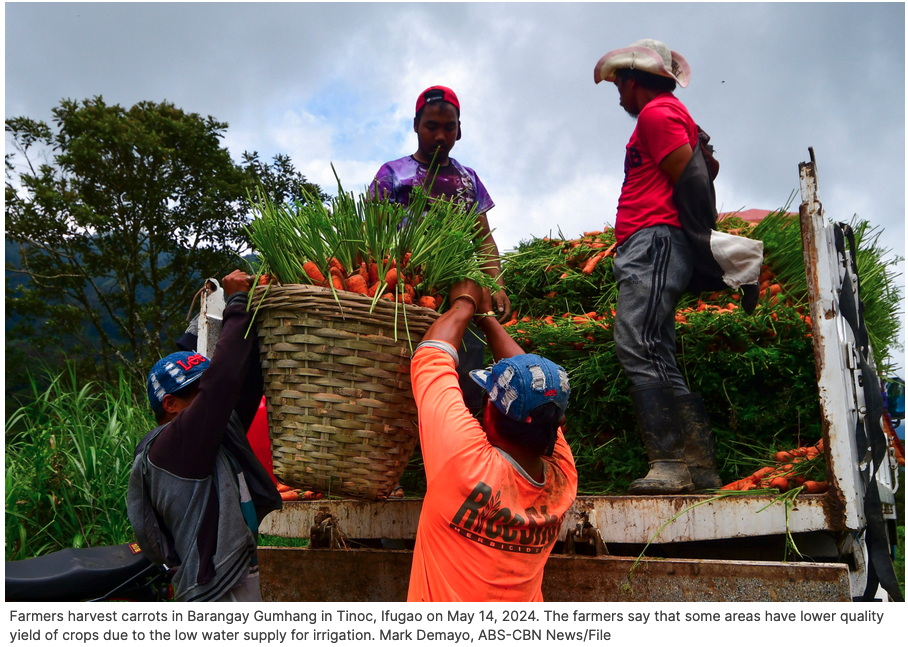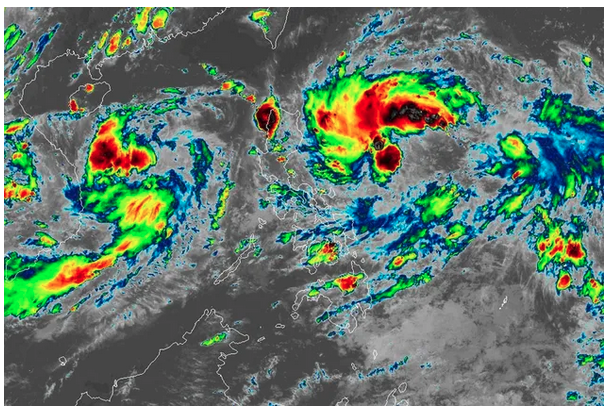Officials of state weather bureau PAGASA on Wednesday offered explanations on why agricultural damage during La Niña is more severe than during El Niño.
"Siguro na-compare ng DA (Department of Agriculture) drought against wet ay mas marami ang damage through mas maraming ulan," Thelma Cinco, officer-in-charge (OIC) of the PAGASA Office of the Deputy Administrator for Research and Development, said at a press conference.
"Doon sa datos kasi ng DA, based on their historical data, dahil sa maraming mga bagyo during La Niña towards the end of the year, ang mga crops ay nasa mature stage so possible na kaya mas malaki ang damage sa agriculture," she explained.
For PAGASA officer-in-charge Roy Badilla, the preparations for El Niño and La Niña also make the difference in the impacts of the climate phenomena.
"Kasi yung El Niño slow onset sya so nakakapagplano nang maigi yung ating agriculture sector. May mga adjustments na nagagawa at saka may mga dams naman tayo na nakakapag-supply ng irrigation water sa ating agrikultura, whereas compared natin dito sa baha, wala talaga, biglaan na lang. Kahit na nasa harvest season na, minsan inaabot pa rin ng baha, so naka-count na mas malaki yung damages sa mga pagbabaha," he said.
PAGASA remains on La Niña watch as the chance of the climate phenomenon developing is still under 70 percent.
"Ang tinitingnan natin ay probability na magkakaroon ng La Niña. Currently ay 65 percent na lang. Itataas natin siya sa alert 'pag naabot niya 'yung 70 percent chance for the next six months," Cinco said.
She added that global climate models show La Niña could begin during the August-September-October season.
The effects of the past El Niño are still felt even as the tropical Pacific is already in neutral conditions.
"Ang El Nino, La Nina ay slow onset iyan, may lag effect pa rin yan. Naramdaman natin nitong June ay iyong dapat i-expect na mas malakas ang Habagat ay hindi pa nararamdaman. Masasabi natin na ito ay lag effect pa rin ng nakaraang El Nino," Cinco said.
State climatologists also observed the shortened neutral phase or the transition period from El Niño to La Niña and vice versa in the recent years, which they attribute to the prevailing human-induced climate change.
El Niño and La Niña are the warm and cold phases of a naturally occurring climate pattern called El Niño-Southern Oscillation (ENSO), which manifests in changes in wind strength and direction and sea surface temperatures in the tropical part of the Pacific Ocean.
In the Philippines, El Niño leads to less rains and storms while during La Niña, there are above-normal rains and more tropical cyclones forming near the country.
Full story here: https://tinylinkurl.com/Why-La-Niña-affects-agriculture-more-severely-than-El-Niño







Comments
Authentication required
You must log in to post a comment.
Log in